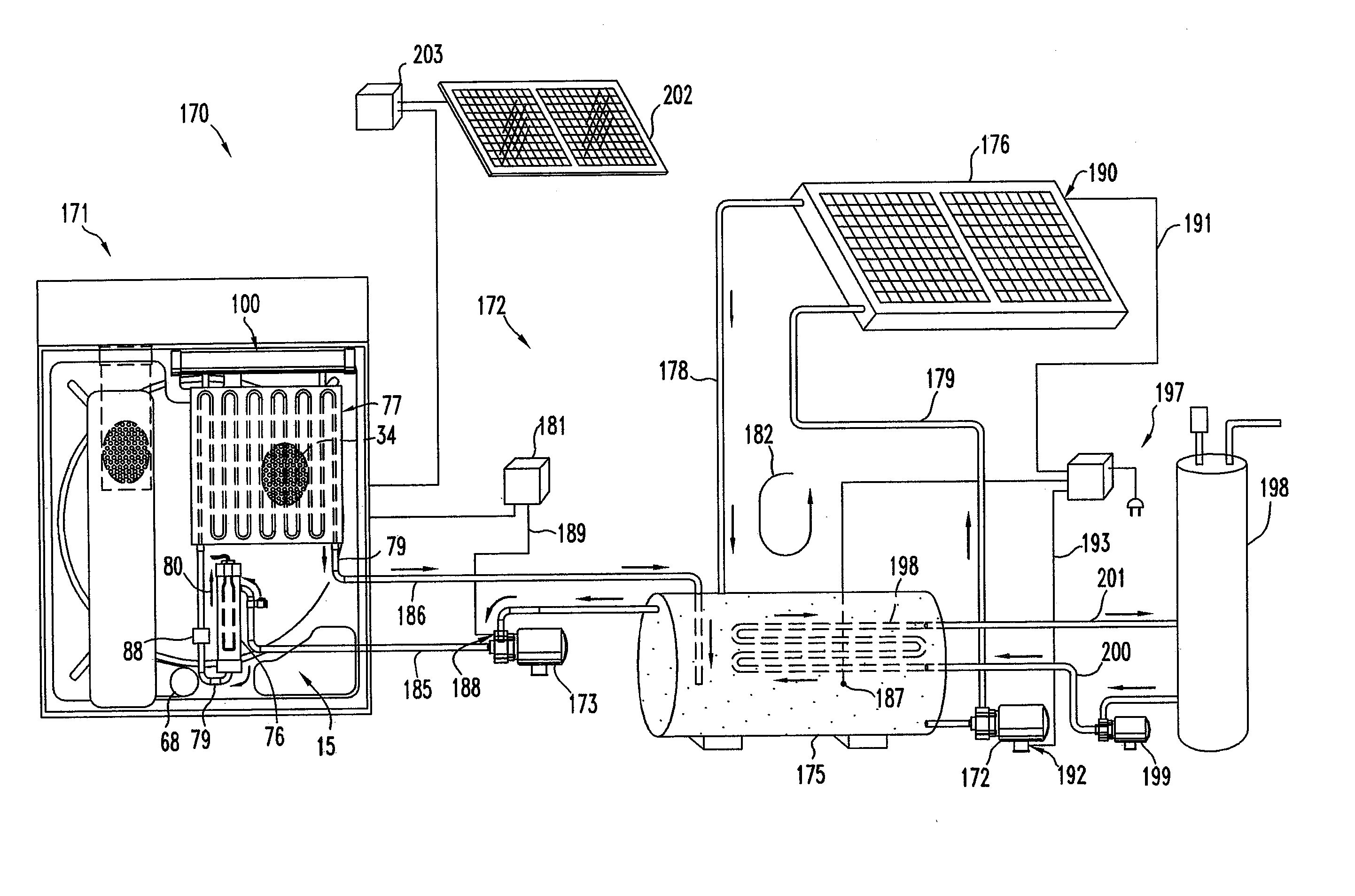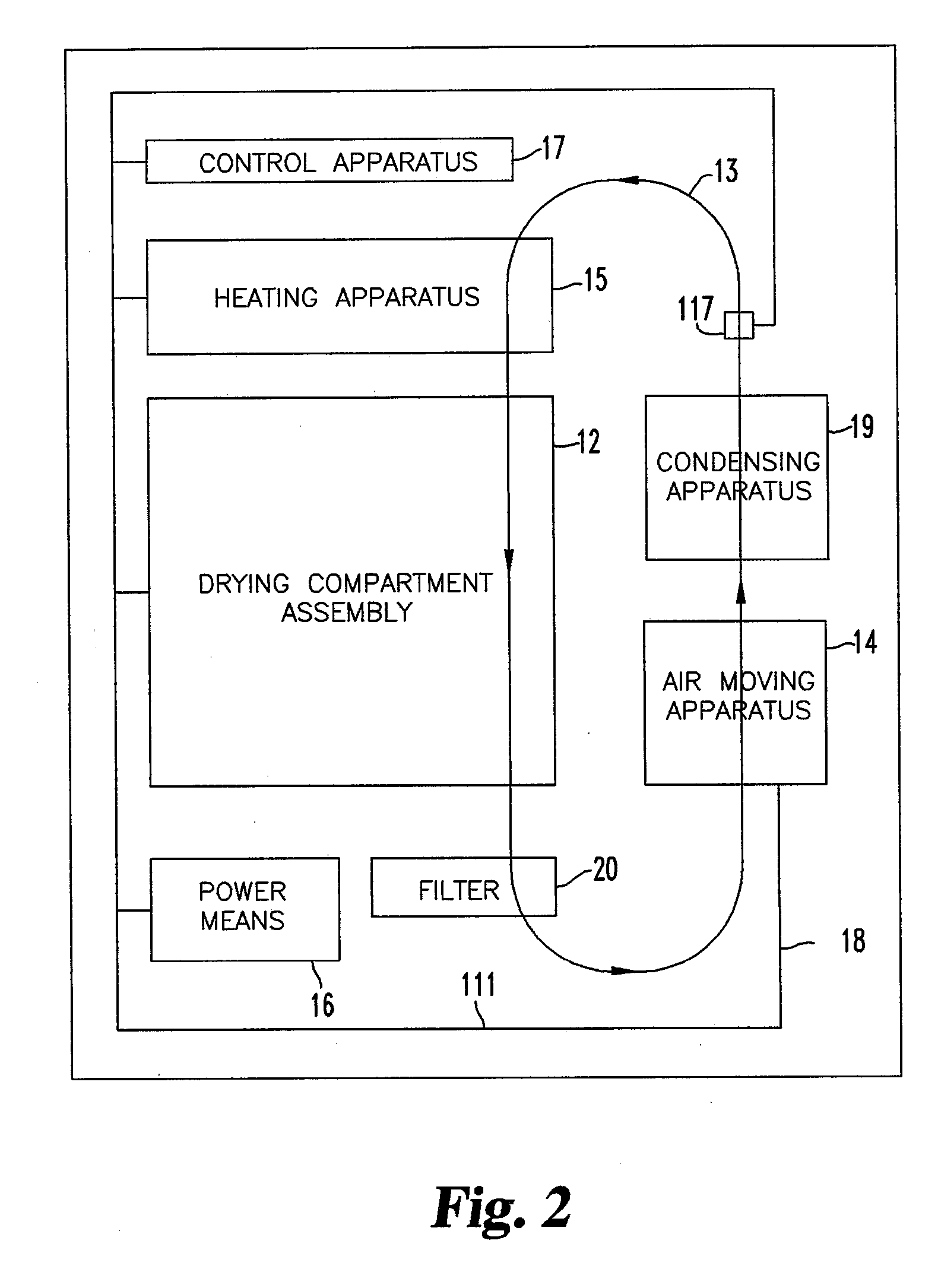Despite their popularity, conventional clothes dryers have a number of drawbacks.
First among these is that such dryers use significant (many might say excessive) amounts of energy.
This is particularly undesirable in the case of conventional gas-powered and electric clothes dryers, given the costs and environmental
impact associated with consuming such
energy resources.
Further, not only do conventional clothes dryers demand heavy amounts of power, but also such conventional clothes dryers fail to make efficient use of this power.
In order to heat articles of clothing for drying purposes, these appliances rely on either a gas-based or electric-based heat source that the U.S. government itself (e.g., the Department of Energy) apparently does not consider to be particularly energy efficient.
Indeed, clothes dryers are so inefficient that no clothes dryer on the market is currently listed as qualifying for the U.S. Government's Energy Star rating (see www.energystar.gov).
The poor efficiency of conventional clothes dryers is largely due to the fact that clothes dryers simply do not use large amounts of the energy that is input to the dryers.
Clothes dryers also
waste heat energy in other ways.
Further, even to the extent that the heat generated by a clothes dryer reaches and heats the clothes, the energy still is often wasted.
In particular, once the clothes drying cycle has been completed, the
heat energy stored in the clothes further is wasted, as the clothes sit idle within the clothes dryer.
Thus, clothes dryers not only require undesirably large amounts of energy in order to operate, but also waste significant portions of that energy.
Although some “condenser dryers” exist in which the air exhausted from the clothes is directed through a condensing coil or
heat exchanger to remove
moisture from the air and recirculate the air through the dryer, these dryers nevertheless remain inefficient.
The inefficiency of condenser dryers is due to the fact that most of these dryers, like the aforementioned dryers, similarly rely on either gas or
electric power in order to heat the air within the clothes dryer.
That is, condenser dryers use the same
high energy consuming devices as other conventional dryers.
Additionally, while certain models of condenser dryers do not use any heat sources (but rather dry clothes using room-temperature air), and thus may be more energy efficient than dryers employing heat sources, these dryers are inefficient in their operation since such dryers take much longer periods of time to dry clothes (particularly heavier loads of clothing).
Although many conventional dryers manufactured and sold on today's market are in some sense energy conservative, this is not to say that those dryers are also energy efficient.
This is an entirely different question than whether the dryer is actually energy efficient, since a dryer that conserves
some energy is not guaranteed to be efficient overall.
Nevertheless, such solar dryers are still not considered to be energy efficient, because they are forced to rely heavily upon one or more “back-up” heat sources, typically electric resistance heat elements.
Such back-up heat sources are necessary insofar as the units are not always able to generate adequate heat from the sun's rays, for example, during evenings / nightfall, heavy overnight snowfall, mostly cloudy days, winter months, or during the presence of other weather related inhibitors.
That is, during times when insufficient
solar energy is received by the units, they revert back to conventional dryers.
Early models of solar-based dryers lacked the ability to store solar-heated water inside insulated storage tanks.
Nevertheless, tank placement, along with building and installation cost, still are not favorable to the public.
Additionally, while conventional clothes dryers are generally safe machines, such clothes dryers remain a
potential source of damage and injury, particularly to the extent that occasionally clothes dryers can start on fire.
Among the primary reasons that conventional dryers catch fire is that dried-out lint / dust accumulates within the dryer and eventually makes its way back to the
heating element, where it can potentially ignite.
Further, while conventional clothes dryers do successfully dry clothes, the dry, heated air that is blown onto the clothes within the clothes dryers does not always produce dry clothes having desirable characteristics.
In particular, when dryers are operated somewhat too long, the clothes being dried can become excessively dry and even burnt or scorched.
Not only does this excessive drying and
resultant scorching potentially damage the clothes, but also as a result the clothes
coming out of the dryer tend to have a somewhat unpleasant, burnt smell.
While certain products such as fabric softeners (e.g., sheets that can be added into the dryer along with the clothes) are available for enhancing the softness and smell of the clothes being dried (in addition to reducing
static electricity in those clothes), such fabric softeners do not fully resolve the problems that result from excessive drying.
 Login to View More
Login to View More  Login to View More
Login to View More 


